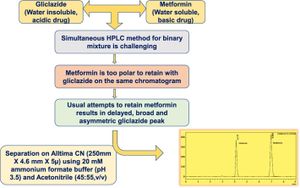Spain's unemployment numbers for January 2025 show mixed results across different regions, signaling both challenges and progress. While some areas report increased unemployment linked to seasonal variations, others are witnessing significant employment growth.
Starting with Móstoles, data indicates a rise of 129 unemployed individuals, marking a 1.35% increase from the previous month. This brings the total number of jobless residents to 9,715. Despite this monthly spike, year-over-year comparisons are more promising, showing 899 fewer individuals out of work compared to January 2024. Mayor Manuel Bautista, addressing the seasonal nature of job losses typically observed after the holiday rush, explained the municipality's strategies to mitigate these impacts. "En Móstoles estamos haciendo frente a la fuerte estacionalidad que caracteriza el mercado laboral de nuestro país..." he stated, reflecting confidence as local policies support stable, quality job creation.
Móstoles exhibits seasonal unemployment patterns typical of many Spanish towns, especially those dependent on retail and tourism jobs—sectors heavily affected post-Christmas. The service sector accounted for the largest share of unemployed individuals, with 7,579 people currently without jobs, followed by construction (888), industry (550), and agriculture (81). Though the city struggles with unemployment spikes, its annual rate shows timely recovery.
Shifting focus to Melilla, Dolores Creus of UGT-Melilla characterized the January figures as ‘negativos’. Here, the number of unemployed rose by 169, or 1.98%, reaching a total of 8,689, with women disproportionately affected. According to Creus, this demographic reveals concerning trends: 500 women under 25 alone are without jobs, and for the age group of 30 to 44 years, 2,105 women are struggling to find work.
Creus noted the seriousness of the situation, emphasizing the necessity for reforms to facilitate job creation and improve employment quality. The service sector remains the hardest hit, with 6,316 individuals reported jobless. Nonetheless, there’s been a slight drop of 126 unemployed compared to January 2024, indicating some progress.
Meanwhile, the Community of Madrid experienced overall growth but faced interruptions. Monthly figures reflected rises across regions; San Sebastián de los Reyes, for example, saw unemployment climb by 1.15%, albeit less than the previous year by 93 individuals, showcasing reductions over time.
Within the broader Madrid region, January normally exhibits higher unemployment rates due to its post-holiday employment slump. San Sebastián's male workforce particularly suffers, with most layoffs affecting older populations and women—demographics align with national trends of persistent joblessness.
Contrasting these areas, the Baix Llobregat region reported very slight increases: unemployment went up by 1.2% this January, totaling 33,310 individuals registered. It’s significant to note, though, year-on-year comparisons show nearly 1,000 fewer unemployed compared to January 2024, showing improvement. Municipal trends remain similar; several localities are experiencing increases, but others like Torrelles and Sant Climent showed respective declines of 4.8% and 4.7%. This variable employment climate depicts recovery visually as labor markets adapt to seasonal whims.
On the development front, Las Palmas de Gran Canaria has made notable strides, marking the creation of 2,841 jobs, or 8.3% more than last January. This surge marks the best start to the year since 2008, attributed largely to employment across various sectors, particularly agriculture. José Eduardo Ramírez, the city's Employment Councilor, pointed to positive growth figures especially among younger populations aged 25-44, aligning with local government initiatives promoting job stability and training.
Policy interventions to tackle structural unemployment appear imperative, as Cres reinforces the emphasis on enhancing active job policies aimed at vulnerable sectors. This focus underlines challenges within Spain’s labor market, requiring continued governmental investment to develop equal opportunities.
Overall, the January 2025 unemployment data presents a complex picture for Spain’s labor force, with various regions differing drastically. Certain areas like Las Palmas demonstrate rejuvenated job creation post-pandemic, whereas others, like Melilla and Móstoles, grapple with proportioning measures to mitigate traditional post-holiday employment fallout. Observing these discrepancies reveals the necessity for thoughtful employment strategies addressing both seasonal and structural hurdles simultaneously.



